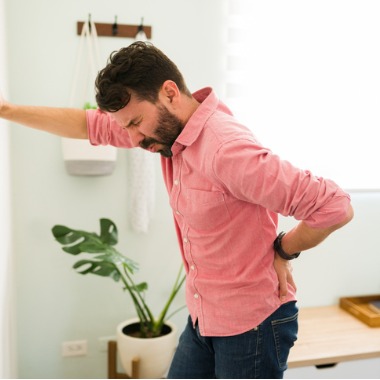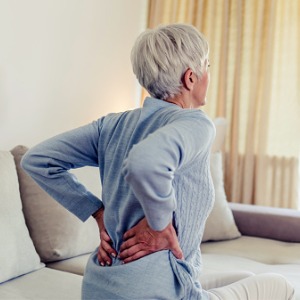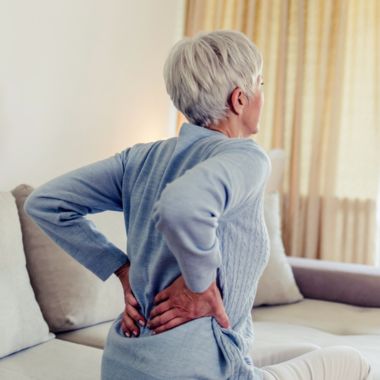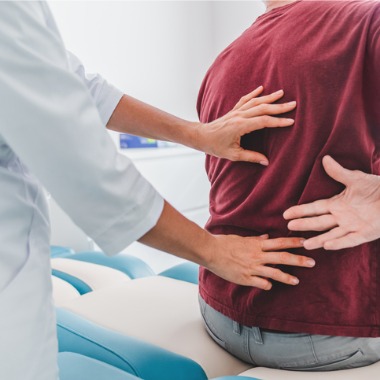5 Possible Reasons Why Your Lower Back Hurts
As one of the leading causes of disability worldwide, lower back pain can significantly impact your quality of life. Symptoms of low back pain can range from a minor ache to a debilitating burning or shooting sensation, and most people want to seek treatment to alleviate their discomfort. However, treatment will only be successful if you accurately know what is causing your lower back pain. Here are some of the five most common reasons why your lower back hurts.

1. Osteoarthritis
Osteoarthritis is one of the most common forms of arthritis and is a degenerative wear-and-tear condition that develops when the protective cartilage on the ends of your bones gradually wears away over time. Without cartilage serving as a protective barrier, your bones can rub together, generating friction and pain in the region. You may be at a greater risk to develop osteoarthritis in your lower back if you have one or more of the following risk factors:
- Age (50+)
- Obesity
- Prior back injuries
- Repeated stress or overuse
- Family history
- Bone deformities
- Diabetes
2. Herniated Disc
A herniated or slipped disc occurs when the soft, gel-like center of an intervertebral disc bulges out through a weak spot in the surrounding annulus fibrosus. As a result, the disc may make contact and compress or irritate the surrounding spinal nerves, leading to pain and other symptoms, such as:
- Numbness and tingling
- Reduced mobility
- Sciatica
- Less coordination
- Difficulty walking
A healthy intervertebral disc acts as a shock absorber to prevent spinal damage during movement, but it may bulge out as a result of the natural aging process, obesity, or intense physical activity.
3. Lumbar Spinal Stenosis
Lumbar spinal stenosis is a condition that occurs when the spine’s foramina narrow. Foramina are located between the spine’s vertebrae, creating a passageway for your nerves to pass through. When this passageway constricts, it can place pressure on the nerves, leading to pain and discomfort in the lower back. Lumbar spinal stenosis may cause the following symptoms:
- Shooting pain in the legs
- Pins and needle sensation or complete numbness
- Weakness in the legs
- Increased pain with activity
- Loss of bladder or bowel control
4. Trauma
Just like other bones in the body, your vertebrae may become fractured due to trauma, such as a hard fall, a sudden force, or a car accident. You may also suffer a compression fracture in the spine due to osteoporosis, which is a disease that causes your bones to become weak and brittle. Fractures can cause severe pain in the lower back, and you will likely feel numbness or weakness if the fracture affects nerves in the spine.
5. SI Joint Dysfunction
The sacroiliac (SI) joints are located between the base of the spine and the pelvis, playing an essential role in weight-bearing, mobility, and stability. When there is too much or too little movement in the SI joints, it can lead to a condition known as SI joint dysfunction. The most prevalent symptom of SI joint dysfunction is a sharp, shooting pain in the lower back and buttocks. You may also experience:
- Muscle spasms
- Stiffness or burning sensation in the pelvis
- Numbness or tingling
- Weakness
SI joint dysfunction may occur due to injury to the joint, but it may also be caused by:
- Scoliosis
- Pregnancy
- Arthritis
- Obesity
- Abnormal gait
- Infection
Seek Help For Your Lower Back Pain
At PainTEQ, we understand how difficult it can be to live with lower back pain. With 30% of chronic low back pain resulting from SI joint dysfunction, we developed a minimally invasive option for patients suffering from this condition. Our LinQ Stabilization System is designed to provide pain relief and stabilization. Contact PainTEQ today to find a partnering physician who can help deliver an accurate diagnosis of your lower back pain and see if you are a candidate for this innovative procedure.



